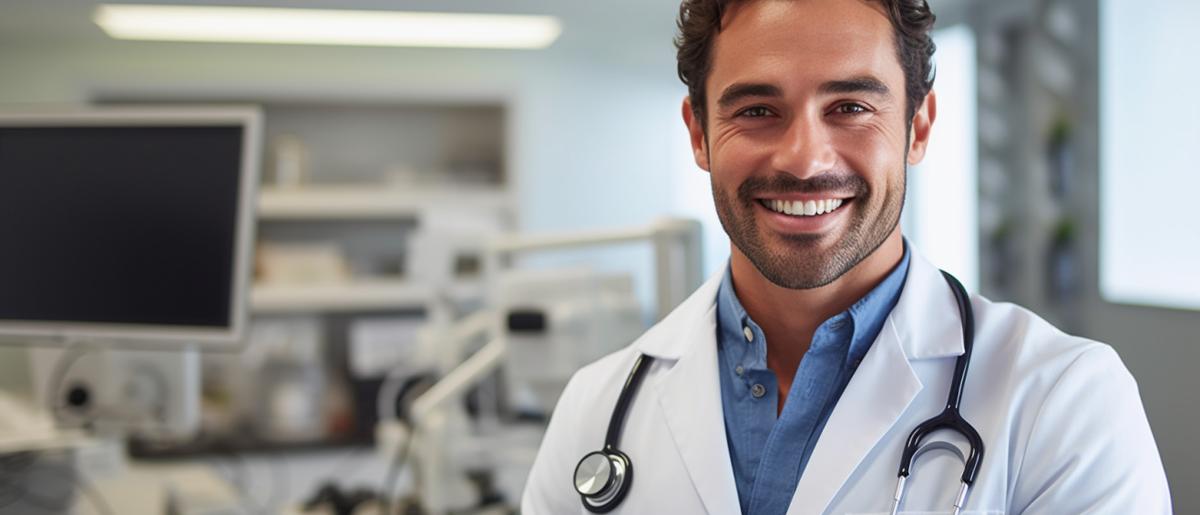

General Practitioners (GPs) play a critical role in providing primary healthcare services to Australians. To ensure accurate and timely diagnosis, GPs rely on various medical equipment and technologies, including point-of-care testing (POCT) devices. These devices have become increasingly important in the modern healthcare landscape due to their convenience, efficiency, and reliability. POCT devices enable GPs to perform diagnostic tests right in their clinics or medical practises, eliminating the need for sending samples to external labouratories. This significantly reduces the turnaround time for test results, allowing GPs to make informed decisions during patient consultations. With POCT devices, GPs can quickly diagnose various conditions, such as infections, cardiovascular diseases, diabetes, and more, facilitating prompt treatment and better patient outcomes. The use of POCT devices also improves patient satisfaction. Patients no longer need to wait for days or weeks for test results, reducing anxiety and promoting a more patient-centreed approach to healthcare. Additionally, by conducting tests within their own practises, GPs can closely monitor the testing process, ensuring quality control and accuracy. To acquire POCT devices, many GPs turn to medical equipment finance options. Medical equipment financing provides GPs with the flexibility to purchase these devices while managing their cash flow effectively. By utilising medical equipment finance, GPs can spread the cost of acquiring POCT devices over time, making it more affordable for their practises.
Compare over 40+ lenders with one application.
Medical equipment finance plays a crucial role in helping General Practitioners (GPs) in Australia acquire the necessary medical devices and equipment for their practises. In simple terms, medical equipment finance refers to financing options specifically designed to assist healthcare professionals in purchasing essential medical equipment. For GPs, medical equipment finance provides a practical solution to overcome the financial burden associated with acquiring costly and technologically advanced medical devices. These devices, such as point-of-care testing (POCT) devices, are essential for accurate diagnoses and improved patient care. With medical equipment finance, GPs can acquire the necessary equipment without straining their cash flow or exhausting their working capital. In Australia, medical equipment finance works by partnering with reputable finance providers who specialise in offering tailored financing solutions for healthcare professionals. GPs can choose from various financing options, such as loans, leasing, or hire-purchase agreements, depending on their specific needs and preferences. The terms and conditions of medical equipment finance are typically structured to accommodate the unique requirements of GPs. The repayment plans are designed to align with the GPs' cash flow patterns, allowing for manageable monthly payments. GPs also benefit from the ability to bundle the cost of the equipment, including instalation, training, and maintenance fees, into a single finance package. By availing medical equipment finance, GPs can optimise their practises' operational efficiencies and enhance the quality of patient care. It provides them with the means to invest in the latest medical technology, stay competitive in the healthcare industry, and ultimately deliver better healthcare outcomes to their patients. Overall, medical equipment finance serves as a valuable resource for GPs in Australia, enabling them to acquire the necessary medical equipment and technology to deliver exceptional healthcare services.
Learn about eligibility and how to apply.
The acquisition and instalation costs of Point-of-Care Testing (POCT) devices for General Practitioners (GPs) in Australia can vary depending on factors such as the type and model of the device, the supplier, and any additional services provided. The cost of acquiring POCT devices can range from a few thousand dollars to tens of thousands of dollars. This cost typically includes the equipment itself, necessary accessories, and sometimes software or training packages. It's important for GPs to carefully review the features and specifications of different devices to ensure they meet their specific needs. In addition to the equipment cost, GPs should also consider the instalation expenses. Some devices require professional instalation to ensure proper operation and integration with the existing clinic infrastructure. The instalation costs may include labour fees, equipment setup, and configuration. GPs should also keep in mind that ongoing maintenance and calibration may incur additional costs. Regular servicing and calibration are crucial for maintaining the accuracy and reliability of POCT devices, ensuring consistent and precise test results. To accurately determine the total cost of acquiring and installing POCT devices, GPs should consult with suppliers or industry experts who can provide comprehensive quotes and estimates. It's important to gather all the necessary information and consider the long-term investment value, quality assurance, and support services offered by the supplier. By understanding the comprehensive costs associated with POCT devices, GPs can make informed decisions regarding the acquisition and instalation process, ensuring they invest wisely and effectively in enhancing their clinic's diagnostic capabilities.
Calculate your repayment estimates and more.
Medical equipment finance for Point-of-Care Testing Devices brings several advantages, including enabling General Practitioners to secure the necessary medical equipment for their operations. Here are some of the advantages:
Flexibility
With medical equipment finance, General Practitioners (GPs) gain the flexibility to acquire Point-of-Care Testing (POCT) devices without tying up their working capital. They can choose from various financing options, such as loans or leasing agreements, tailored to their specific needs and budget. This flexibility allows GPs to allocate their resources effectively and invest in other areas of their practise, ensuring the smooth operation of their clinic.
Access to advanced technology
Medical equipment finance enables GPs to access the latest and most advanced POCT devices in the market. By spreading the cost of acquisition over time, GPs can acquire state-of-the-art equipment without experiencing a significant financial burden upfront. This access to advanced technology allows GPs to provide accurate and efficient diagnostic services, enhancing patient care and improving health outcomes.
Cash flow management
By opting for medical equipment finance, GPs can manage their cash flow effectively. Rather than making a substantial upfront payment for POCT devices, they can spread the cost into regular payment instalments. This predictable payment structure helps GPs to maintain a stable cash flow, enabling them to meet other financial obligations, such as staff salaries, facility maintenance, and other operational expenses.
Upgraded equipment
Medical equipment finance offers GPs the opportunity to regularly upgrade their POCT devices as technology evolves. With flexible financing options, GPs can easily replace outdated equipment with newer models, ensuring they have access to the most up-to-date diagnostic tools. Upgraded equipment can enhance the accuracy, efficiency, and reliability of diagnostic tests, leading to better patient care and improved outcomes.
When considering the purchase of Point-of-Care Testing Devices, General Practitioners can benefit from exploring the tax advantages and deductions available through medical equipment finance. By understanding these incentives, GP practises can make informed decisions that align with their financial goals and maximise their return on investment. In Australia, there are specific tax benefits associated with financing medical equipment, including Point-of-Care Testing Devices. Under the current tax regulations, businesses can generally claim deductions for expenses incurred in the financial year in which they are paid or accrued. This means that the finance repayments made for the equipment can be deducted from the taxable income, reducing the overall tax liability. Additionally, the Australian Taxation Office (ATO) provides depreciation opportunities for medical equipment purchased through financing. GP practises can claim depreciation on the equipment's value over its useful life, allowing for a gradual deduction of the equipment's cost over time. It is important for General Practitioners to consult with their accountants or tax advisors to understand the specific tax benefits and deductions applicable to their individual circumstances. Each practice may have unique financial situations, and seeking professional advice will ensure compliance with tax regulations and optimise the potential benefits. Overall, medical equipment finance offers General Practitioners a tax-effective way to acquire Point-of-Care Testing Devices while managing their cash flow. By utilising the tax advantages and deductions available, GP practises can enhance their financial position and provide quality healthcare services to their patients.
To empower General Practitioners in Australia, medical equipment finance presents a practical solution for acquiring Point-of-Care Testing Devices. These devices play a crucial role in enhancing patient care and improving diagnostic capabilities within GP practises. By utilising medical equipment finance, GPs can effectively manage their financial resources while gaining access to state-of-the-art testing devices. The tax benefits and deductions associated with this financing option further enhance its appeal, allowing for potential tax savings and improved cash flow. With the ability to deduct finance repayments and claim depreciation, GP practises can optimise their tax liabilities and make strategic financial decisions. This enables them to allocate their resources efficiently, ultimately benefitting both their patients and their practise. It is important for General Practitioners to consult with their accountants or tax advisors to fully understand the tax benefits applicable to their specific circumstances. This will ensure compliance with tax regulations and maximise the advantages of medical equipment finance.
To estimate your monthly repayments and the total cost of the loan, input the loan amount, loan term and interest rate into the calculator below. This helps you plan your budget and choose the most suitable loan terms.
These helpful FAQs will help you find the answers you need. If you can't find what you're looking for, you can request a callback below.